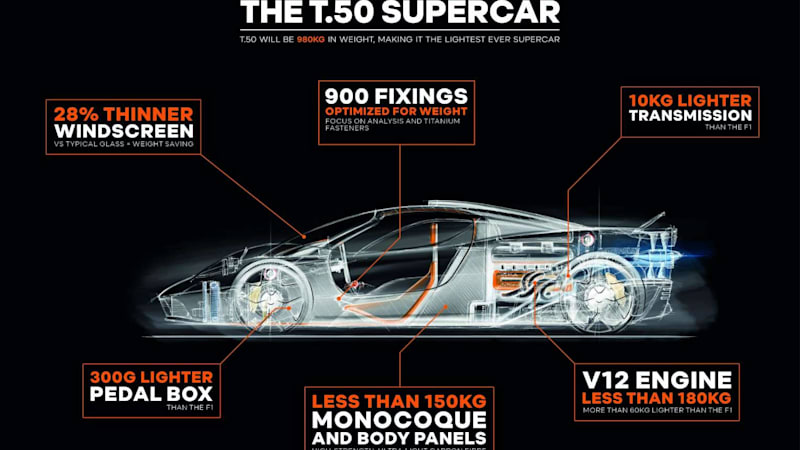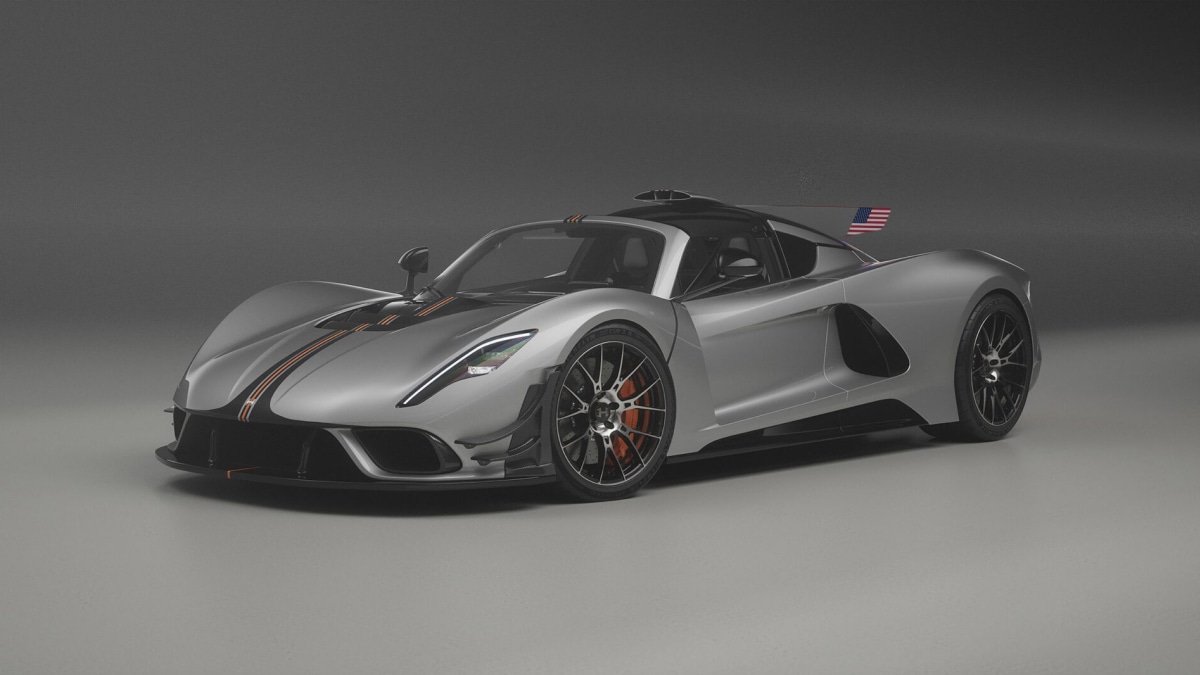Gordon Murray is staying on the offensive about his T.50 supercar, working the phones recently to let all know that “This car will deliver — and this is a promise — the driving experience of [a McLaren] F1, but better, better in so many ways,” because he and his team have “fixed the things we knew were wrong with the F1.” As they say in the Westerns, them’s big words. Two factors he credited for the T.50’s estimated performance specs are bespoke parts, and the relentless focus on weight savings they enable. The team behind the supercar doesn’t need to restrict any component to parts-bin sourcing, doesn’t need to check with production or accounting departments, and can create or re-engineer any part to serve a single vehicle. Technology improvements since the creation of the McLaren F1 and the use of a bespoke 3.9-liter Cosworth V12 gives the team even more freedom than Murray had with his icon.
This has led to ruthless weight shaving, helped by what Murray described as “Weight Watchers” meetings. The Cosworth V12 comes in at less than 400 pounds, cutting 132 pounds compared to the 6.1-liter V12 in the F1 — the designer citing the S70 BMW engine as part of the reason he overshot his 2,205-pound (1,000-kilogram) target for the 2,579-pound McLaren. Carbon brake technology wasn’t polished enough in the early 1990s to get the units to work on the McLaren, so the F1 used heavier iron brakes, a setback the T.50 won’t suffer. The Xtrac six-speed manual transmission cuts 22 pounds compared to the six-speed sequential box in the F1. The all-carbon moncoque and body panels are less than 330 pounds, the driver’s seat and frame weigh 15 pounds, the twin outboard passenger seats weigh less than seven pounds each. Murray told his team they wouldn’t be able to take any weight out of the pedal box, since he designed it himself. His engineers cut seven ounces. They shaved the windshield glazing to be 28% thinner than what would be standard for this application. The materials analysis team modeled the stress loads for all 900 nuts, bolts, washers, and fasteners in the T50, designing them with just enough material — titanium, of course — to do their jobs.
This and more is how Gordon Murray Automotive beat the 2,205-pound target for the T.50 by 45 pounds. That will put the T.50 260 pounds above the hardcore 260-horsepower Lotus Elise Cup 260, 180 pounds under the 181-hp MX-5 Mazda Miata Sport. Yet the T.50 has 640 horsepower in everyday guise, which can be cranked up to 690 hp with ram air induction in certain modes. That lower figure is 22 hp more than the F1, for a car weighing more than 419 pounds less, part of what Murray means when he says the T.50 is “the F1 for the next generation, with all the same targets. But of course my toybox is much bigger now.” Backing that up, Murray said about a third of the deposits received so far come from people who own a McLaren F1, another 40% of deposits come from buyers under 45 who had McLaren F1 posters on their walls in their youth, but who’d been priced out of the astronomical F1 market.
From now until the end of June, the GMA teams are finalizing details, tooling, and working with suppliers on parts. If all goes well, there’ll be a working prototype ready for road testing in September. Production on the 100 road cars and 25 track-only cars begins in late 2021, deliveries to start in early 2022. About 25 slots remain for the road car, so anyone with a $740,000 to put toward the $2.5 million starting price should send word to England.
Related Video:




